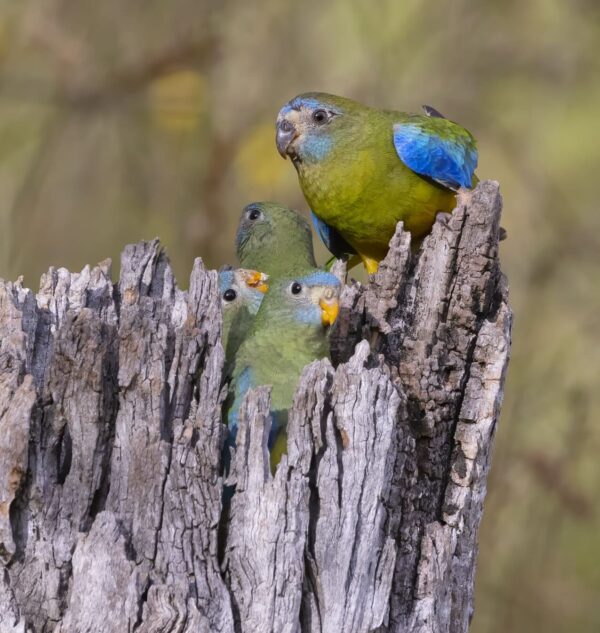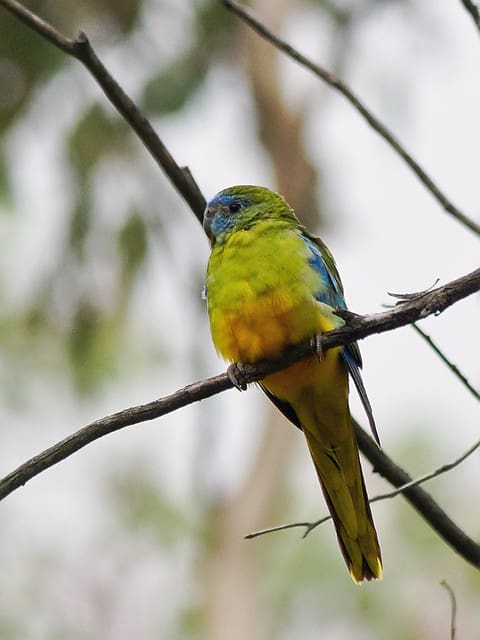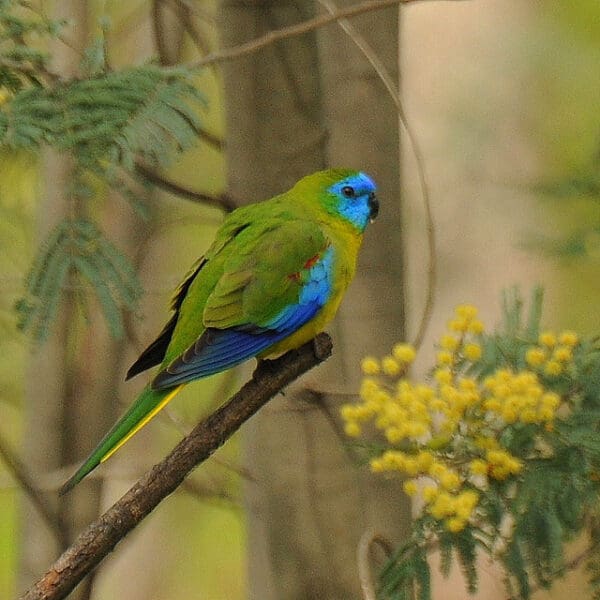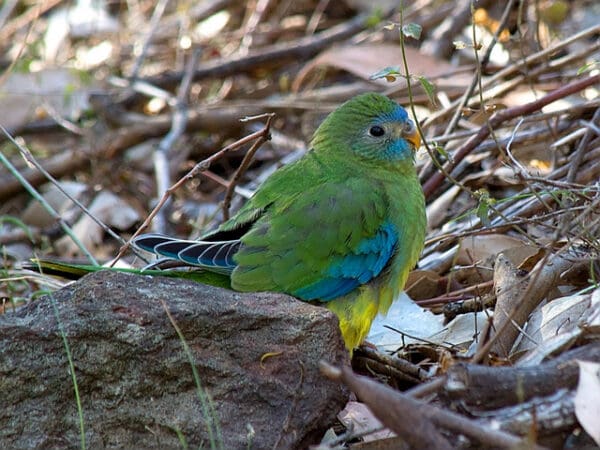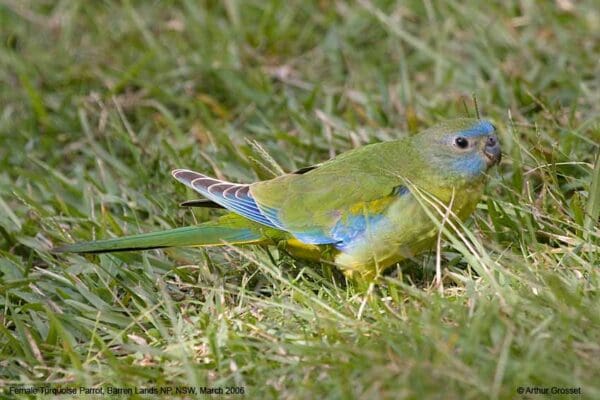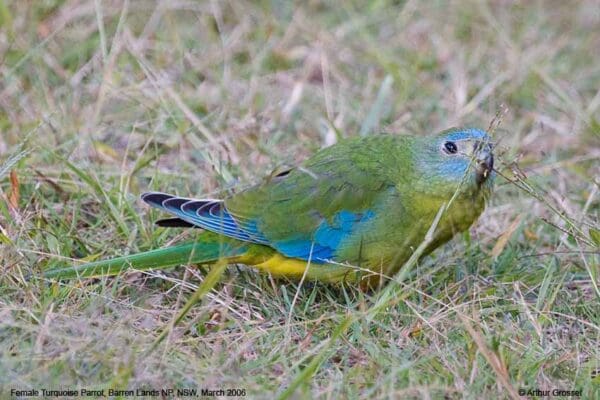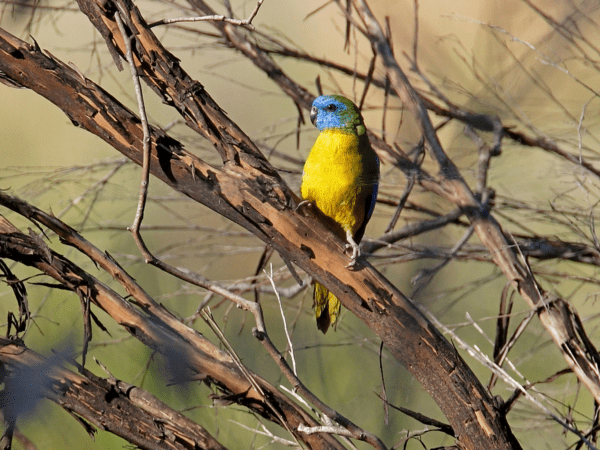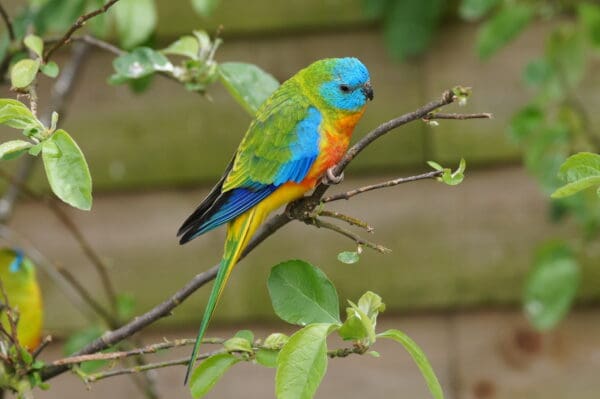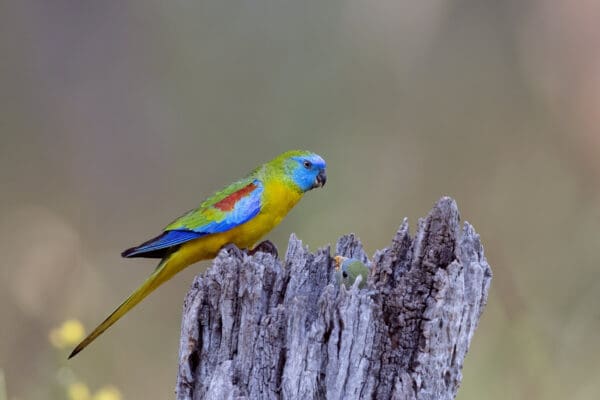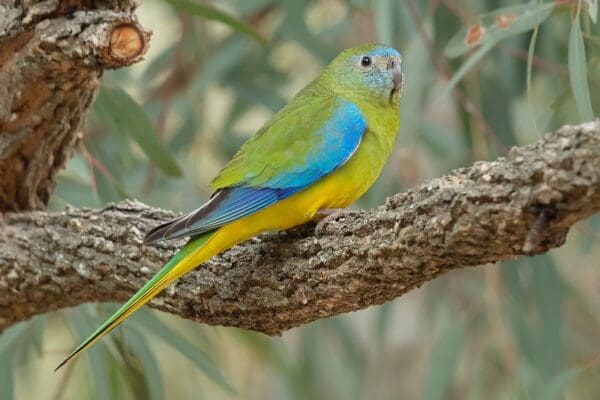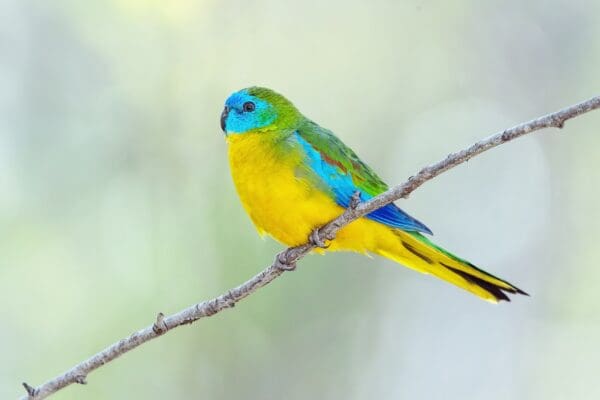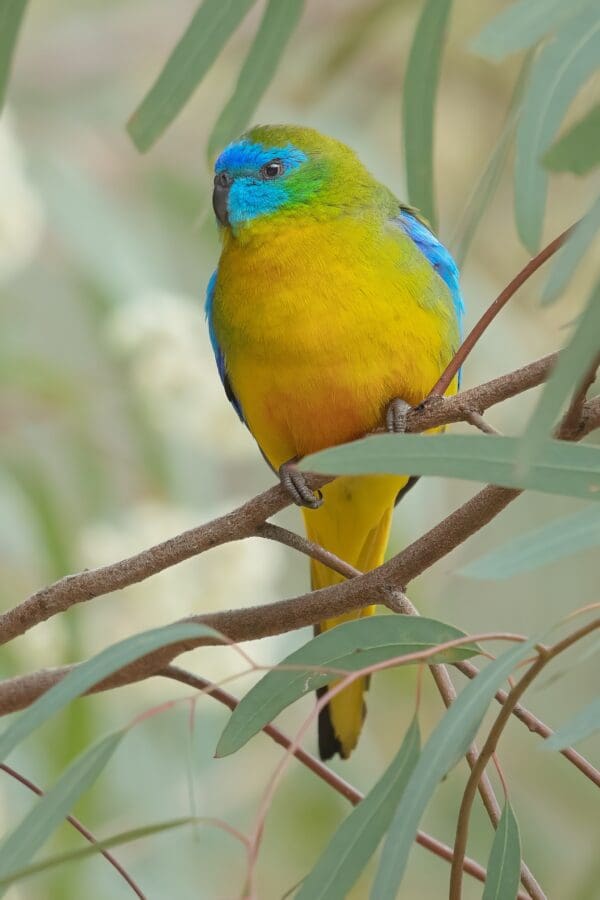Turquoise Parrot
Also known as:
Turquoise Grass-Parakeet, Turquoisine Parrot or Grass-Parakeet, Beautiful Parrot or Grass-Parakeet, Chestnut-shouldered Parrot or Grass-Parakeet, Chestnut-winged Parrot or Grass-Parakeet, Red-shouldered Parrot or Grass-Parakeet, Grass Parrot
Also known as:
Turquoise Grass-Parakeet, Turquoisine Parrot or Grass-Parakeet, Beautiful Parrot or Grass-Parakeet, Chestnut-shouldered Parrot or Grass-Parakeet, Chestnut-winged Parrot or Grass-Parakeet, Red-shouldered Parrot or Grass-Parakeet, Grass Parrot
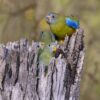
![© David Cook [CC BY-SA 2.0] via Flickr](https://parrots.org/wp-content/uploads/2023/01/wpt_Turquoise-Parrot_1209-13-100x100.jpg)
![© Diana Padron [CC BY-SA 2.0] via Flickr](https://parrots.org/wp-content/uploads/2023/01/wpt_Turquoise-Parrot_1209-11-100x100.jpg)
![© David Cook [CC BY-NC 2.0] via Flickr](https://parrots.org/wp-content/uploads/2023/01/wpt_Turquoise-Parrot_1209-10-100x100.jpg)
![© David Cook [CC BY-NC 2.0] via Flickr](https://parrots.org/wp-content/uploads/2023/01/wpt_Turquoise-Parrot_1209-9-100x100.jpg)
![© David Cook [CC BY-NC 2.0] via Flickr](https://parrots.org/wp-content/uploads/2023/01/wpt_Turquoise-Parrot_1209-8-100x100.jpg)
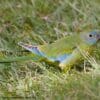

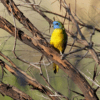
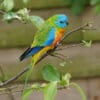
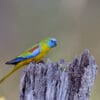
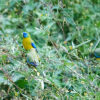
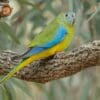
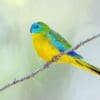

DID YOU KNOW?
The female Turquoise Parrot will tuck leaves into the feathers of her rump and carry them to her nest.

Neophema

pulchella
Size:
20 cm (7.8 in)
Weight:
35-46 g (1.2-1.6 oz)
Subspecies including nominate:
one
Colour Adult:
Male-deep blue face; bright green upperparts; bright yellow underparts and underside of tail, tinged with orange on upper breast; variable orange patch on centre of abdomen; blue underwing coverts with brown/red on innermost median wing coverts, forming “patch”; bright green uppertail. Beak grey/black. Eye brown/grey. Female-paler blue face; buff/white lores; pale green breast; yellow underparts and undertail, more often suffused with orange on centre of abdomen than male; shoulder markings absent; upper wing coverts paler blue; pale underwing stripe.
Colour Juvenile:
As in adult female, but males generally with darker blue face and a bit of brown/red on inner median wing coverts, forming “patch.”
Call:
Calls made in flight are soft, metallic notes. Weaker, high-pitched twittering is made while feeding or at roost. A rapid, high-pitched series of short notes from male when alarmed, and lower, harsher sounds from female.
More Information:
Content Sources:
CITES
BirdLife International
Cornell Lab of Ornithology/Birds of the World
Parrots: A Guide to Parrots of the World, Juniper and Parr, 1998
Parrots of the World, Forshaw and Cooper, 1977. 2010 edition
Parrots of the World, Forshaw, 2006.
Parrots in Aviculture, Low, 1992.
Lexicon of Parrots, Thomas Arndt.
A Guide to Incubation and Handraising Parrots, Digney, 1998.
Captive Status:
Very common
Longevity:
10-15 yrs
Housing:
Walk-in enclosure, minimum length 2 to 2.5 m (6.5-8.2 ft).
Diet:
Small seed mix such as: canary, millet, and smaller amounts of oats, buckwheat, safflower and a little hemp; limited sunflower seed; spray millet; green leaves such as: Swiss chard, lettuce, sowthistle, dandelion, chickweed; seeding grasses; rearing food made from: hard boiled eggs, wholegrain bread and carrot, all ground to crumbly consistency; fruits such as: apple, pear, orange, banana, pomegranate; complete kibble.
Enrichment:
Provide bird-safe, unsprayed flowering, fir, pine or willow branches, swings, ropes and ladders; wooden block or vegetable tanned leather toys, puzzle/foraging toys. Also provide overhead misters or shallow water bowls for bathing.
Nest Box Size:
Vertical box 6″ x 6″ x 12″ (15.2 cm x 15.2 cm x 30.5 cm).
Clutch Size:
4-6
Fledging Age:
4-5 weeks
Hatch Weight:
—
Peak Weight:
—
Weaning Weight:
—
World Population:
Unknown, stable.
IUCN Red List Status:
Least Concern
CITES Listing:
Appendix II
Threat Summary:
Not globally threatened, but ongoing threats include fox and cat predation, loss of nesting trees and inappropriate burning regimes. In Victoria, the species has adapted to a new food source, cape weed, and is reported to be increasing although this may not be a range-wide phenomenon.
Range:
SE Australia, from SE Queensland at latitude 26 degrees south, south to eastern and north-central Victoria, west to longitude 144 degrees 45 min E.
Habitat:
Found up to 700 m (2296 ft) in a range of lowland habitats including grassland, heathland, scrub, orchards, tree-lined creeks through farmland and woodland margins.
Wild Diet:
Feeds on seeds, flowers and fruit of both native and introduced plants including Leucopogon microphyllus, Stellaria media, Briza minor, Hordeum murinum, four species of Danthonia, Stipa, Urtica urens, Hypochoeris glabra, Carthamus lanatus, Dianella revoluta, Geranium, Sisymbrium, Paspalum, Pulteneae procumbens, Dillwynia retorta, Brachyloma daphnoides, Hibbertia stricta, flowers of Grevillea alpina, moss spore cases and spilt sorghum by roadsides.
Ecology and Behaviour:
Found in flocks or small groups foraging on the ground for seeds. Communal roosts are not uncommon. In some areas some birds may breed twice annually.
Clutch and Egg Size:
4-6 broadly elliptical eggs, 20.5 x 16.5 mm (0.8 x 0.6 in).
Breeding Season:
August-December, sometimes may also occur from April-May. Nest is in hollow in tree, stump, fence post or fallen log.
Related Links:
